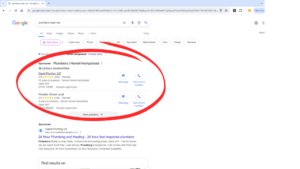For many years, marketing and sales were almost entirely separate – separate disciplines, and in many businesses, separate functions. But the digital world has broken down the barriers; buyers are behaving differently, and the two are merging into one continuous experience for the customer. Organisations are now expecting their marketing to deliver sales, not just awareness. Marketers are increasingly being asked to demonstrate a solid return on investment for their activities.
So, how can you generate increased returns from your marketing and how do you create a seamless journey for your potential customers? That is where data driven marketing comes in. If you are a marketing director or in charge of your organisation’s marketing activities, data driven marketing may be your route to better results. But first, what is data driven marketing?
Data driven marketing is marketing that, instead of using ‘gut feel’ or ‘creativity’, uses data and analysis as its basis.
This isn’t to say that data driven marketing is devoid of either gut feel or creativity. Despite the amount spoken about Artificial Intelligence (AI) in marketing, in my view the real benefits of data driven marketing are seen when a human adds the final part of understanding to the data. Whilst the marketing may be driven by data, it is insight and creativity that turns the data and analysis into successful marketing.
Moving on from my view of the data driven world, I should provide a definition that is commonly accepted. It would be fair to say that a simple explanation of data driven marketing is:“Data Driven Marketing is a method of marketing that draws upon various pieces of data available to the marketer, in order to provide a better return on investment for the organisation employing such tactics and typically involving a more personalised, and arguably therefore better, experience for the recipient of such marketing activities.”
The starting point for data driven marketing should be: what data is available? The second question is then: what can I learn from the data?
What data is available?
Lack of data is not the reason why more organisations don’t do data driven marketing. Most organisations collect huge amounts of data from many sources. Users leave a trail of data everywhere they go; we buy data; we generate our own data. As a data driven marketer, our role is to understand how to best use and combine all of this data to provide a more personalised experience for our current and potential customers. I have suggested a model to organise the data that you may be able to access, based around the source of the information, and whether it refers to named or anonymous individuals.
- 3rd Party, Known Person
This type of information was the real target of GDPR. Information in this quadrant includes when users leave their data on a website, and it is then sold to or shared with other organisations. Quite simply, you have very specific data referring to an individual, but it was derived from a source other than yourself. It may have come through a commercial arrangement, but sometimes it is from knowing where to look.
If I want to sell services helping businesses to improve their Trust Pilot ranking, I can search Trust Pilot for, say, restaurants and look at ones with a low score. I can find the exact people I want to talk to, but I didn’t need to collect the data from that person myself.
- 3rd Party, Anonymous
Data in this category can be extremely powerful, as it includes market reports and articles. Arguably, this report fits into this quadrant, as it tells you how other people are using data driven marketing. From such reports, you can learn what your competitors and the market at large are doing. You can make better decisions as a result. However, it isn’t specific to your audience and potentially not specific enough to your industry.
As an example, let’s suppose I want to provide services helping online retailers. I read a report that points to the fact that Amazon is the biggest search engine for physical products. I can now focus my message on those that don’t appear to sell their products through Amazon.
- Own, Anonymous
Any organisation with a website will generate lots of this kind of data: Google Analytics is a great example of this. You can see how many people reach a certain point in your website, but then leave your website without making contact or buying your products. Integration of this kind of data is vital to understanding your customer journeys, and can even help you to design better products and services.
As an example, let’s say I have an e-commerce site. Using Google Analytics, I can see exactly where customers drop out of the buying process. Using heat-mapping, I can see where they are going on each page. This will show me areas where I need to improve my site; preventing drop outs increases my sales.
- Own, Known Person
This is where the real power lives. It is most commonly used for email marketing campaigns, but don’t fall into the trap of therefore thinking this is only about email. It simply means that you know person X ‘did this’, ‘bought that’ and is likely to ‘need this’. Done well, you can create campaigns that are absolutely tailored to your customers, and will give them a truly memorable experience of your brand.
Imagine I can see that a customer has bought a certain product from me. I can see that they also bought subsequent products that were not related to the first. What’s more, I can see that they always open my newsletters, and I can even see which bits they read. They, through the data, are identifying themselves as my brand ambassadors. If I wanted early adopters for a new product, sending an exclusive offer to this kind of customer will all but guarantee a sale. Equally, if I try to send the same offer to a lapsed customer, again seen through the data, I may get a more negative response.
What can I learn from the data?
The sheer volume of data we have assembled can cause its own problems. The data can be contradictory, allowing less scrupulous marketers to pick and choose to prove their own theories. It can be hard to align data from different sources. Sometimes, we can freeze when faced with so much. I would suggest two areas for you to focus: ways to improve what you offer; and ways to improve the way you communicate within your marketing.
Improving what you offer
Never before have we had such valuable information at our finger tips. In years gone by, an organisation might hold focus groups where paid audiences would give them feedback or ideas. Now, we have real audiences telling us, often clearly, what they want and don’t want. All it takes is a desire to understand the data. This data is often used for quick tactical wins, but the best marketers also look to make deeper changes within their company’s offer.
Improving your communications
We can learn a lot about what people (collectively or individually) are responding to. Therefore we can target them with more of what they react to. We can often predict what would make a good fit to what they have previously bought, or used or done. With this level of detail, we can produce different messages for different people. At a very minimum, we can start to personalise the experience a user has of our brand.
This post is part of a larger set of posts discussing data driven marketing. Look out for further posts where we will discuss how all of this works, the tools you need, and how to make it precisely relevant to you and your organisation. You now have a top level view of data driven marketing and a way to quantify the types of data that may come your way. You also know that you can use this data to improve both offering and communications.


